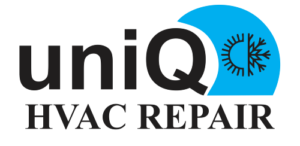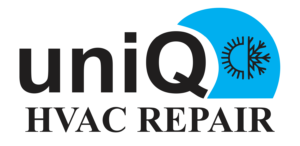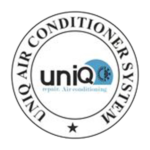A Comprehensive Guide to AC Duct Insulation Repair
The importance of a well-functioning air conditioning system cannot be overstated, especially in regions with extreme weather conditions. To ensure that your AC system operates efficiently and cost-effectively, proper maintenance is crucial. One often overlooked aspect of AC maintenance is the condition of the ductwork and its insulation. In this comprehensive guide, we will delve into the world of AC duct insulation repair, exploring the reasons behind the need for repair, the steps involved in the repair process, and the benefits of maintaining a well-insulated duct system.
Why AC Duct Insulation Repair Matters
- Energy Efficiency
One of the primary reasons for AC duct insulation repair is to maintain the energy efficiency of your cooling system. When the insulation surrounding your ducts deteriorates or becomes damaged, it can lead to significant energy loss. This inefficiency results in higher energy bills as the system has to work harder to cool your space. Proper insulation ensures that the cooled air reaches its destination efficiently, reducing energy consumption and saving you money.
- Indoor Air Quality
Leaky or damaged duct insulation can allow contaminants and allergens to enter your home’s living spaces. Dust, mold spores, and other pollutants may infiltrate the ducts, compromising your indoor air quality. This can lead to health issues, especially for individuals with allergies or respiratory conditions. Repairing damaged insulation helps maintain a healthier indoor environment.
- Temperature Consistency
Inconsistent temperatures throughout your home can be a sign of damaged duct insulation. When insulation is compromised, it can result in uneven distribution of cooled air. Some areas may be too cold, while others remain warm. Repairing the insulation ensures that your home maintains a consistent and comfortable temperature.
- Reduced Noise
Proper insulation also serves as a noise barrier, reducing the sounds produced by your HVAC system. When the insulation is damaged, you may notice increased noise levels as air travels through the ductwork. Repairing the insulation can help maintain a quieter living space.
Steps for AC Duct Insulation Repair
Now that we understand why AC duct insulation repair is essential, let’s explore the steps involved in the repair process:
- Inspection
The first step in repairing AC duct insulation is to conduct a thorough inspection of your ductwork. Look for signs of damage, such as cracks, holes, tears, or areas where insulation has become loose or detached. Pay close attention to the joints and connections, as these are common areas where insulation problems occur.
- Gather Materials
Before starting the repair, gather the necessary materials, including:
- Duct tape or HVAC foil tape
- Insulation material (e.g., fiberglass or foam board)
- Utility knife or scissors
- Gloves
- Safety goggles
- Dust mask (for safety when working with insulation)
Ensure that you choose insulation material that is compatible with your existing ductwork and meets local building codes.
- Clean the Ducts
Clean the ducts thoroughly before applying new insulation. Remove any dust, debris, or contaminants that may have accumulated over time. A clean surface will ensure better adhesion of the new insulation.
- Repair Damaged Insulation
For minor damage, such as small holes or tears, you can use duct tape or HVAC foil tape to seal the affected areas. Ensure that the tape is applied securely to prevent air leakage.
For more significant insulation damage or areas where insulation has become detached, you may need to replace the insulation material. Carefully cut and fit the new insulation material to cover the damaged or missing sections. Use gloves, safety goggles, and a dust mask when handling insulation to protect yourself from potential irritants.
- Seal Joints and Connections
Leaky joints and connections can also contribute to energy loss. Use HVAC foil tape to seal these areas securely. Ensure that the tape is applied tightly and covers the entire joint or connection to prevent air leakage.
- Insulate Exposed Ducts
If your ducts run through unconditioned spaces, such as attics or crawlspaces, make sure they are adequately insulated to prevent temperature fluctuations. Use insulation material designed for this purpose to wrap around the exposed ducts.
- Test for Leaks
After completing the repair work, it’s essential to test the ducts for leaks. Turn on your AC system and feel around the repaired areas for any air escaping. If you detect leaks, revisit those areas and apply additional tape or insulation as needed.
Benefits of Maintaining Well-Insulated AC Ducts
Now that we’ve covered the repair process, let’s discuss the numerous benefits of maintaining well-insulated AC ducts:
- Energy Savings
Properly insulated ductwork ensures that the cooled air reaches its destination efficiently. This reduces the workload on your AC system, resulting in lower energy consumption and reduced utility bills.
- Improved Comfort
Well-insulated ducts help maintain a consistent and comfortable temperature throughout your home. You won’t experience hot and cold spots, ensuring a more pleasant living environment.
- Extended HVAC System Life
When your HVAC system doesn’t have to work as hard due to efficient ductwork, it experiences less wear and tear. This can extend the lifespan of your system, saving you money on costly replacements or repairs.
- Enhanced Indoor Air Quality
A well-insulated duct system prevents contaminants from entering your home, contributing to better indoor air quality. You and your family can breathe easier, especially if you have allergies or respiratory conditions.
- Noise Reduction
Proper insulation acts as a noise barrier, reducing the sounds produced by your HVAC system. Enjoy a quieter and more peaceful living space.
- Environmental Benefits
Reducing energy consumption not only saves you money but also reduces your carbon footprint. By maintaining well-insulated ducts, you contribute to a more sustainable environment.
Conclusion
AC duct insulation repair is a vital aspect of maintaining an efficient and comfortable home. Regular inspection and maintenance can help you identify and address insulation issues before they lead to energy waste, poor indoor air quality, or temperature inconsistencies. By following the steps outlined in this guide and recognizing the benefits of well-insulated ducts, you can ensure that your AC system operates at its best, saving you money and providing a more comfortable living environment. Don’t overlook the importance of duct insulation—take proactive steps to keep your HVAC system in top condition.


 Please enter your name and phone number below, We will get back to you soon.
Please enter your name and phone number below, We will get back to you soon.